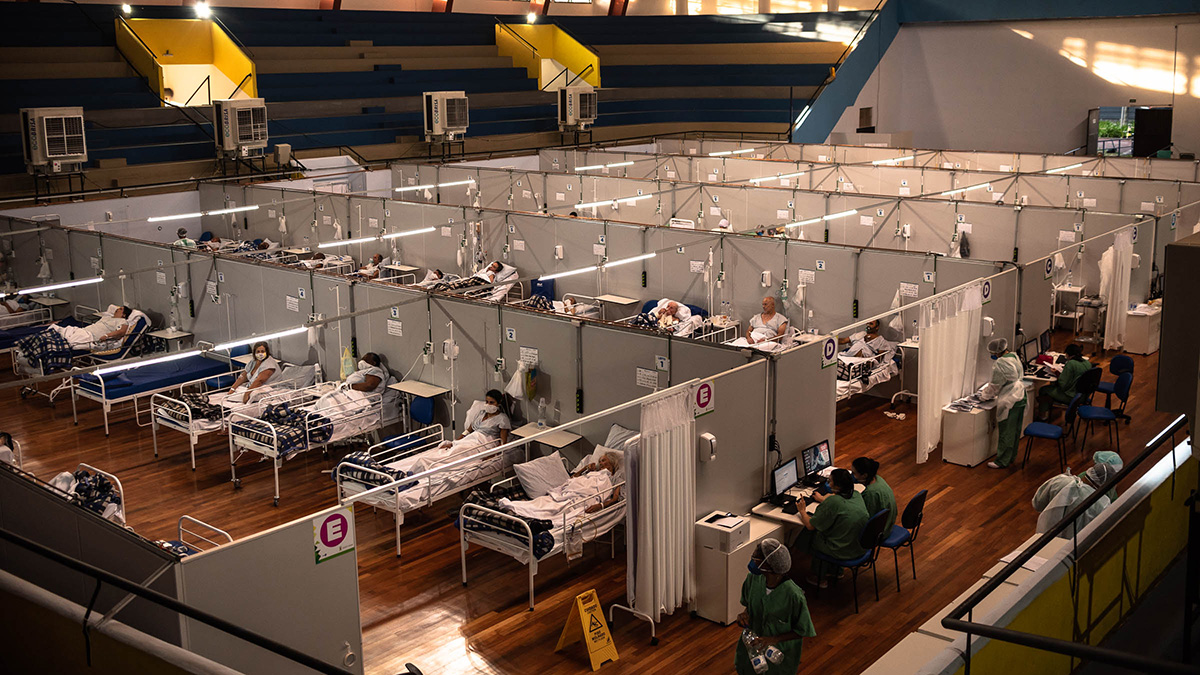Source: GeoHealth
A translation of this article was made by Wiley. 本文由Wiley提供翻译稿。
Weather has long been known to affect the spread of common colds and flus. Temperature and humidity can influence how viruses fly through the air, how long they remain infectious outside the human body, and how susceptible people are to infections.
Since the onset of the recent pandemic, researchers have published hundreds of studies testing whether this applies to COVID-19, too, but conclusions have varied—possibly because of short study times, limited meteorological conditions, or oversimplified data analysis. To overcome these shortcomings, Kerr et al. studied the spread of COVID-19 in Brazil over 14 months, from July 2020 to August 2021.
Brazil encompasses a vast range of environments, from rain forest to savanna. Combined with the country’s decentralized political approach to the pandemic, this meant the researchers could capture disease spread under a wide variety of circumstances.
In general, temperature was inversely correlated with disease spread, the team found. Using epidemiological and statistical modeling, they showed that when temperatures dropped into the low 20s (Celsius), the mean number of secondary infections caused by each infected person (Rt) increased by 0.05. Humidity sometimes had an even greater effect, with high humidity increasing Rt by up to 0.1, but the effect was less reliable than that of temperature.
However, the directionality of those relationships flipped depending on the timescale that the team analyzed. For instance, if only data from June to August 2021 are used, COVID-19 transmission increased as temperature increased. Similarly, if only data from March to May 2021 are used, COVID-19 transmission increased as humidity decreased. The time dependence of the relationships could explain the mixed results reported in the existing literature, the authors say.
The influence of the weather—albeit minor—was more consistent than the influence of lockdowns on the severity of the pandemic. Rt sometimes increased when governments attempted to restrict residents’ movement, but just as frequently, restrictions had the opposite effect.
Two nonmeteorological factors had an outsize influence over the course of the pandemic. The number of COVID-19 cases an area had experienced in the recent past was a strong predictor of how the pandemic would progress. Surges, for example, tended to be followed by lulls. In addition, yet-unidentified factors had a large effect on the pandemic. So-called random effects are linked with increased disease spread in Brazil’s southern and southeastern regions but decreased disease spread in the north—a pattern that correlates with access to health care and social vulnerability.
Although meteorology does play a minor role in the spread of COVID-19, the authors stress that more proven mitigative measures like vaccines and other public health measures are more likely to reduce disease transmission. (GeoHealth, https://doi.org/10.1029/2022GH000727, 2023)
—Saima May Sidik (@saimamaysidik), Science Writer

